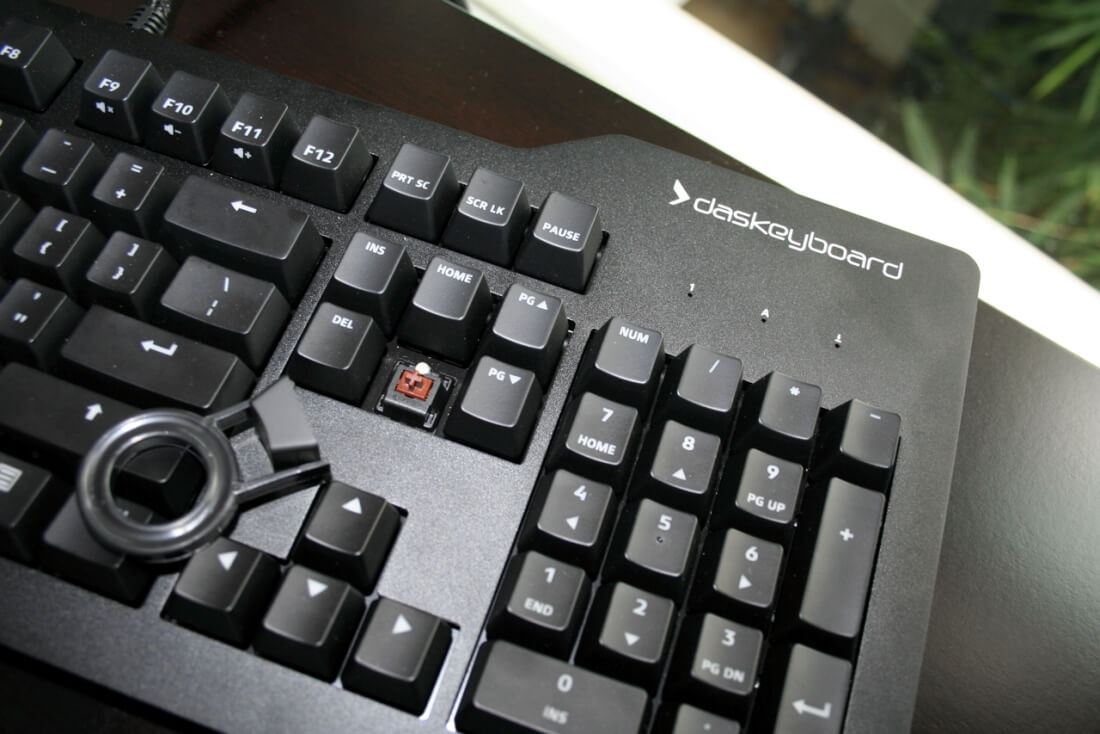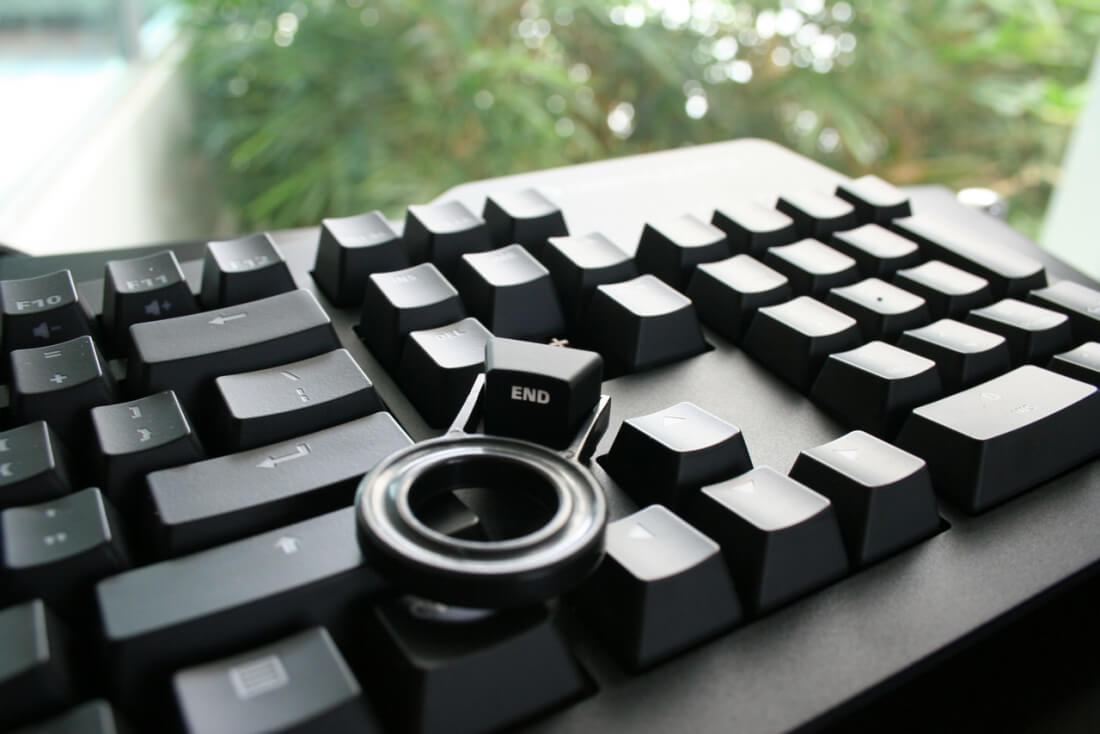Metadot has built a reputation for creating simple and clean-looking, high-quality keyboards under the Das Keyboard brand. With a focus on perfecting the typing experience, the company has built a loyal following since 2005 after arguably pioneering the commercial mechanical keyboard market as we know it today.
With every new iteration they've been careful – if not overly conservative – to tweak the formula just enough. Das' minimal approach means its keyboards don't carry all the bells and whistles you'll find in many similarly priced units. But as mechanical keyboards have exploded in popularity, especially gaming-oriented ones, you could say they've felt the pressure to spread their wings further.
The 2014 Das Keyboard Professional, for example, introduced an oversized volume rocker and dedicated media keys to the series. Earlier this year Metadot launched a new brand and product line dubbed Division Zero, developed specifically for the pro gaming and eSports community, and they also launched a Kickstarter campaign for a cloud-connected, open API RGB mechanical keyboard.
The new Das Keyboard Prime 13 is a return to their minimalistic roots, delivering only the essentials combined with a great typing experience. There are no dedicated media keys this time around or macro keys that can be programmed however you like, although one much-requested, long overdue feature did make the cut: LED backlighting.
The Das Keyboard Prime 13 measures 457mm long, 172mm deep and 23mm thick while weighing in at 1.26kg. That's about the same as the Das Keyboard 4 Professional and – no surprises here – it also features the series' distinctive shape, with an extended rectangle in the upper right corner.
Most of the keyboard's structure is plastic while the top is clad with an aluminum faceplate providing the feel of a premium product that's durable and well built with no flex whatsoever. Hardwired to the board is a 6.5 ft. braided cable that terminates with dual gold-plated USB connectors. Underneath are the usual twin fold-out feet and rubber feet to keep it from moving while typing.
As usual – except with the Division Zero – the Das Keyboard Prime 13 is a plug and play affair, there's no software to install and it'll work seamlessly with Windows, macOS and Linux systems.
Long gone are the days of the fingerprint-prone glossy exterior. Aesthetically, the Prime 13 is distinctly understated, even more so than previous models, with Metadot going full monochromatic this time around – the Das logo has dropped its red accents. The end result is simple yet elegant. If you tend to favor sober over flashy then you'll appreciate the Prime 13's minimalist design.
Something to keep in mind is that the Prime 13 doesn't include a wrist rest, a nearly essential inclusion for some, but not a big deal for others – I fall in the latter group.
The board is offered with Cherry MX's popular brown mechanical switches, which have a nice tactile feedback but produce less sound to annoy workmates compared to the blue variety.
The keyboard features a standard 104-key US layout with sleep, brightness adjustment and media controls residing across the top as function keys – instead of having dedicated media keys, like the Das Keyboard 4 Professional. Ports have also been reduced from a couple of USB 3.0 and audio jacks, to a single USB 2.0 pass-through port along the top edge of the board just above the number pad.
The black key caps are constructed of thermoplastic with white laser-etched inscriptions for the LED backlighting to come through. Speaking of which, while backlighting is certainly a welcome addition, it's not really my favorite implementation. F1 and F2 cycle through the six brightness levels. But given how Cherry MX switches have the LED on the upper edge of the switch itself, keys only light up the top half of the legends on keys with shift functions. This could have easily been fixed by better positioning the symbols on each individual key so they are evenly lit by the LED underneath.
Coming from regular use of one of Das' prime competitors, the Code Keyboard, I also prefer how the latter uses a white backplate underneath the keys to more evenly disperse the light that's reflected off keys. I would rather have center-illuminated keys with no light spilling at all but that's just how backlighting works on Cherry MX switches.
The board features N-Key rollover meaning every keystroke will register no matter how many other keys are simultaneously depressed. This is advantageous to gamers, who might need to manage complex key combinations, though keep in mind that NKRO is only available through the PS/2 connection. If you connect via USB, then you "only" have 6KRO – not that you'll ever need more than that.
Keys feel smooth, feature a clean font, and resistance when pressed is exactly the same all across the board, providing for a consistent typing experience. Using the Prime 13 for the past couple of weeks reaffirmed my preference for brown switches over blues and clears. They require less actuation force than clear switches while delivering quiet, non-click activation, and a nice tactile bump on every keystroke.
The Das Keyboard Prime 13 is unquestionably a high-quality mechanical keyboard that should appeal to anyone with an eye for simplicity and performance. I would have no problem recommending it to anyone despite a minor annoyance with the backlighting and the downgrade to a single USB 2.0 port.
With a MSRP of $150, however, it'll have plenty of competition in the market and those with specific needs and wants (macro keys, RGB backlighting, etc.) now have many alternatives to choose from.
score
Pros: Superb typing experience from Cherry MX brown switches. Sturdy construction. Media, sleep and brightness controls through function keys. Das' simple, elegant design finally gets backlighting.
Cons: Only one USB 2.0, a downgrade from the two USB 3.0 ports found on the Das Professional 4. Keys with shift functions not evenly lit due to how Das has positioned the symbols.





